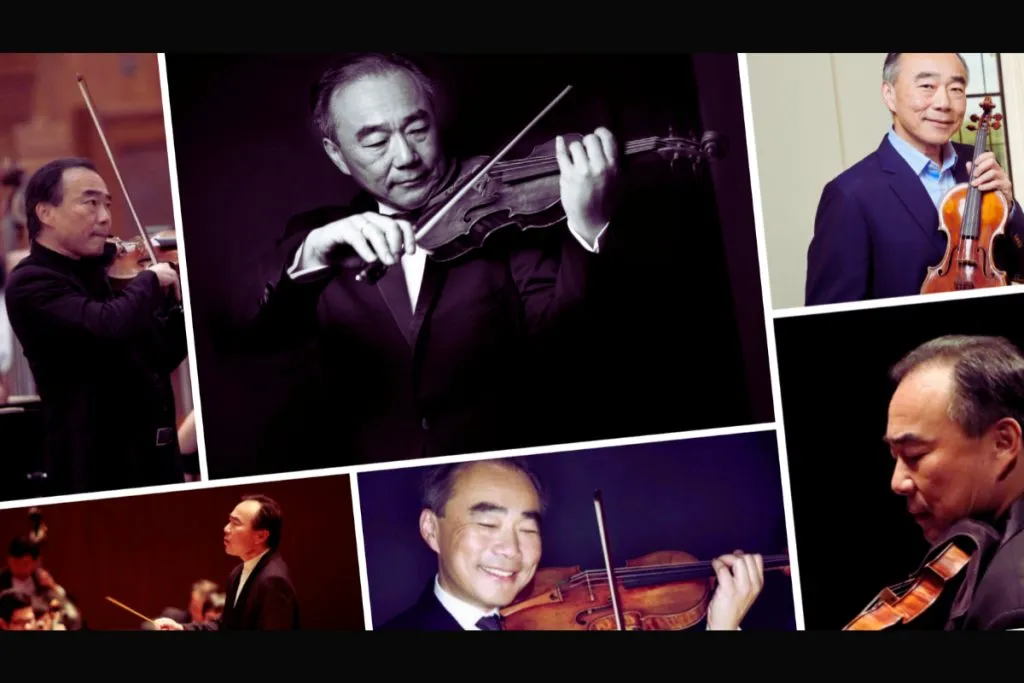
Photo Credit: Cho-Liang Lin Collaborations
When a phone rings with an impossible request, most musicians might hesitate. Yet throughout his four-decade career, Taiwanese-American violinist Cho-Liang Lin has repeatedly stepped into uncertainty, whether political, artistic, or personal. His collaborations across continents and musical traditions have become defining moments not just in his own career but in classical music’s ongoing evolution.
Digital Music News is proud to partner with outside agencies to create opportunities for artists to be visible to the music industry.
From geopolitically charged performances to partnerships with living legends, Lin’s story illuminates what happens when musical challenge meets meticulous preparation. Each collaboration has tested not just his technical command but also his capacity to bridge seemingly unbridgeable divides.
Musical Diplomacy Across the Taiwan Strait
Few musical collaborations carried the geopolitical weight of Lin’s groundbreaking tour of mainland China in the aftermath of the Cultural Revolution. As the first Taiwanese musician officially invited by the Beijing government to tour China, he navigated complex diplomatic tensions that extended far beyond music.
“I became the first Taiwanese musician to be invited officially by the Beijing government to tour China,” Lin recalls. “Taiwan and China were still officially at war, and still are officially at war, a little like the Koreas.” Lin noted that the performance environment couldn’t have been more challenging, “The venues were horrible. The conservatories were in shambles after culture revolution. Concert halls were in shambles, orchestras were not very good”.
The conservatories and orchestras did not have the luxury of having good instruments, air-conditioning to take refuge during the blistering heat and humidity in August, or acoustically superior concert halls. Orchestra musicians did not get paid well and had to moonlight playing in hotels and restaurants. Yet, the hunger for knowledge from the students and faculty was so strong. “Everybody was thirsty, hungry for knowledge,” he explains. It was very inspiring. “I was witnessing a phoenix rising from the ashes of the Cultural Revolution. Many of those students attending my concerts are now prominent musicians globally.” What made this tour particularly significant was precisely this historical moment. Many faces in those audiences would later emerge as musical figures themselves.
Twenty Years With Isaac Stern
The twenty-year relationship between Cho-Liang Lin and violin legend Isaac Stern ranks among classical music’s most consequential mentorships. Beginning in 1981 and continuing until Stern’s death in 2001, this collaboration transformed his approach to both music and cultural leadership.
Cho-Liang Lin participated in several of Stern’s chamber music recordings, including performances alongside Yo-Yo Ma and Jaime Laredo. “Isaac Stern, the great violinist, became really my mentor,” he explains. “We played a lot of chamber music together. He was very, very good at encouraging young talents to play with him, a unique figure in that respect”.
The mentorship extended beyond purely musical matters. With characteristic humor, Lin notes Stern also taught him “how to order good dinner” and navigate social circles that included “all the shakers and movers on Wall Street and New York City government and all that.” These two decades of collaboration were, in his words, “very beautiful years when I saw him regularly and played with him regularly”.
What made this collaboration particularly challenging was his need to absorb Stern’s musical wisdom while developing his own distinct voice. He had to perform under the scrutiny of one of history’s great violinists while transforming from student to peer, all while maintaining the mentoring relationship that had proven so valuable to his development as an artist.
Cho-Liang Lin’s Fifty-Four World Premieres
Perhaps the most ambitious collaborative undertaking in his career was the eighteen-year leadership of the La Jolla SummerFest, where he initiated a transformative commissioning process that would change the landscape of contemporary classical music.
“During that time, I instigated this commissioning process, and I was very pleased when I was about to leave that festival, I looked at the listing, I had the commission and premiered 54 works during my tenure in La Jolla,” Lin notes with quiet pride. This staggering number of commissions, approximately three premieres annually, demonstrates an extraordinary commitment to expanding the violin repertoire.
As Music Director from 2001 to 2018, the festival transformed from a primarily chamber music event into a multidisciplinary gathering featuring dance, jazz, and new music. The commissioning project included composers spanning wildly different traditions, including rock drummer Stewart Copeland, jazz legends Chick Corea and Wayne Shorter, and contemporary classical composers like Kaija Saariaho and Christopher Rouse.
He approaches this delicate process with remarkable tenderness and care, describing it with a medical metaphor: “You never know whether a piece will endure the test of time, but you have to give the piece a chance. It’s like a baby. The piece is there as a baby, but you have to deliver it. I’m the doctor who brings the baby out to the public and show it to them”.
The risk and reward of these collaborations is evident in the Grammy success with composer Joan Tower. He notes with satisfaction that “one of my recordings of violent concerto by this fabulous American composer, Joan Tower, actually won a Grammy for her. She became the best composer because of that album”.
Cultural Fusion With Tan Dun
Among his most groundbreaking musical partnerships was the collaboration with Chinese-American composer Tan Dun. Their work together represents a fascinating fusion of Eastern and Western musical traditions, presenting unique performance challenges that required stretching far beyond conventional classical technique.
Cho-Liang Lin recorded “Out of Peking Opera” with the Helsinki Philharmonic Orchestra in 1998, a piece that draws heavily on the traditions of Chinese Peking Opera while utilizing Western orchestral techniques. The composition requires the violinist to master techniques from both traditions, incorporating the distinctive slides, bends, and articulations of Chinese music into the classical violin technique.
For this violinist, the challenge was not just technical but conceptual, finding a musical voice that could authentically represent both worlds. He needed to master traditional Chinese musical gestures on a Western instrument, find timbres that evoked Peking Opera vocal techniques, and balance the precision of Western notation with the flexibility of Chinese expression.
This cross-cultural collaboration continued with Tan Dun’s Violin Concerto “The Love,” which he premiered at Carnegie Hall’s China Festival. The concerto further pushed boundaries by integrating rock drumming and hip-hop rhythms with classical structures, requiring an unprecedented adaptation to these diverse stylistic elements.
The Living Partnership With a Stradivarius
Not all musical collaborations involve other human beings. One of the most demanding partnerships has been with the Stradivarius violins played throughout his career.
Cho-Liang Lin performs on the 1715 “Titian” Stradivarius, an instrument with a distinguished pedigree that places him in a lineage of great violinists across generations. Despite his early financial struggles, he made the momentous decision at age 23 to purchase his own Stradivarius, a financial commitment that consumed “six years of just, again, a hundred concerts a year. And I put every penny available into the bank account so I could pay back the debt”.
The artistic challenge of mastering such an instrument proved equally demanding. “A great violin like a Strad did open up whole new horizons and also taught me how to be extremely astute in getting the sound out,” he explains. “Strad is not like your ordinary fiddle. It’s like a person, a very special person. You have to get to know it and before it’s willing to reveal its special qualities to you”.
The Legacy of Musical Challenge
Through pioneering cultural exchanges, mentorship from legends, birthing new musical works, collaborating across traditions, and forming symbiotic relationships with historic instruments, these challenging collaborations illustrate what happens when musical boundaries are pushed to their limits.
In recent interviews, Cho-Liang Lin teaches about these collaborative relationships as defining not just his own musical journey, but also as representative of classical music’s ongoing evolution. As the art form continues its search for relevance in the 21st century, his career offers a compelling document of how tradition and innovation can coexist, how cultural boundaries can be transcended, and how the impossible, when approached with both courage and preparation, often becomes the most memorable.

